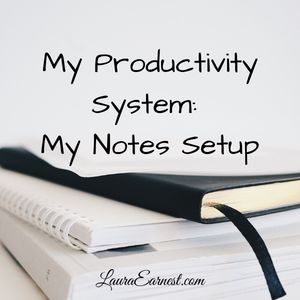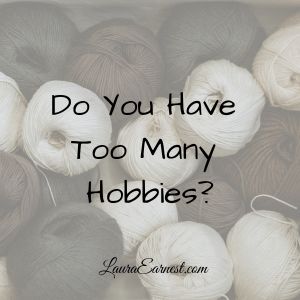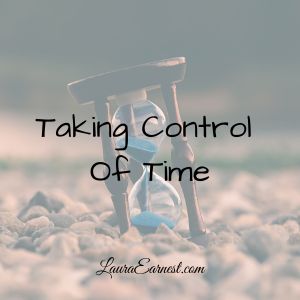Have you ever noticed how many places it is possible to make notes these days? Besides all the options on your phone and computer there are sticky notes, notebooks, white boards and more. Today I will show you my note setup, along with why I chose what I did and how it fits into the framework of choosing productivity system components.
Leaky Memory
I didn’t need David Allen to tell me I needed to write things down to get them out of my head. My memory has never been fantastic, and it rapidly deteriorated to its present state around the time my daughter was born.
My memory has more leaks than a student’s first C program. (Apologies for the computer joke, there are those among my readers who will appreciate it.)
For those non-programmers: my memory has more holes in it than a colander.
If I didn’t write it down, it simply didn’t exist.
Where to Write It Down?
My problem is that I wrote things down everywhere. And then I couldn’t find what I needed.
I wrote things down in my paper planner, then wrote things on sticky notes that stuck onto (and fell off) the paper planner. I wrote things into email and sent it to myself. I wrote things into the details of meetings in Outlook. I had at least five notebooks going at all times, and then I refused to write things down because I didn’t have the “right” notebook.
And then there was the online content. I tried printing it out, finding it was too much paper. I tried bookmarking it, to find that sites and pages went away and I couldn’t get back to what I had saved. I tried saving web pages as PDF, just to find I couldn’t locate the information on my hard drive.
If You Can’t Retrieve the Info, Why Save It?
One of the things that I have had reinforced over many years working with data in Information Technology: If you can’t get the data out of the system, there is no point in putting it in.
And what does “getting out of the system” entail? It means that first you have to be able to find the data, and second to be able to pull it out in a form that can be read.
I have had issues with both types of problems in the past.
Can’t Find It
If you can’t find the information when you need it, it is just like not having the information. Sticky notes get lost, get stuck to other things or they are stuck to a computer monitor in a different building. Meeting notes that got attached to the wrong appointment or that got lost in the web of recurring appointments. Paper notes that got filed incorrectly or were in a different notebook. Printouts that got lost in the pile of paper. It goes on and on.
Not being able to find information is not more common to paper or to digital. It all comes down to picking a tool that can be searched. For instance, the bullet journal index is a good way to narrow down where you need to look. Electronic notebooks need to have full search capabilities.
Can’t Read It
Not being able to read your notes is frustrating. It doesn’t just apply to poor handwriting – it applies to cryptic notes that seemed to make perfect sense at the time, but later give you no clue as to what you meant.
While digital notes eliminate the poor handwriting, it is still necessary to take enough detail down in your notes so that you can understand what they meant later on.
How I Take Notes
What I write down depends on what sort of information I am working on.
Work
For work, I have a set of pages in my bullet journal that lays out the three types of notes I generally take.
For a project, I list the contacts, the programming sprints and releases, the development features and a log of what happened.
For a development feature, I list the project, the sprint and release, and any design decisions.
For the daily log, I list my appointments, and then a log of what I worked on, mostly references to the development features.
For meetings, I list who was invited, who showed up, and the topics covered.
Blog
My blog notes are generally articles I want to cover in the future. After many failed notes with a vague topic, I started to write out a brief summary of the idea along with what points I would like to make.
My articles are laid out with templates, driven by the format of the article. A regular blog article has a different structure and purpose than a newsletter and consequently has a different template in Notion.
Home
Most of my home notes are clips of web articles.
For craft patterns they stand as clipped from the web. I will make adjust the note once I have bought the materials.
For code snippets, I write a brief intro for how I used it, and any adjustments I made to the code.
My Notes Setup
I have different types of note information that I need to capture, and how I capture them depends on where I am and how I need to retrieve the information.
I don’t necessarily distinguish between types of information – projects mix with meeting notes and tasks at work. Craft patterns mix with blogging marketing articles, programming code snippets and articles on bettering my writing.
The one exception to this is recipes. While I was in Evernote, recipes lived there too. However, it was often difficult to search or print the recipes for use. After my switch to OneNote, I moved my recipes to Paprika.
My Note Setup Specifics
These are the specifics of my notes setup, put in context of the rest of my system.
Work:
- System of Record: My bullet journal
- Why I chose it: It’s a low-tech way that allows me to free-form the information in whatever way I need.
- Type/Amount of Information: I take a lot of notes at work. These include logs of my daily activities, meeting notes and design decisions, and design notes.
- Where I access it: In my bullet journal
- Redundancy: I have no redundancy. If I lost the information, it would mean that many details would be harder to find. Rarely do I need to go back and reference previous notes.
Blog:
- System of Record: Notion
- Why I chose it: I wanted something that was searchable that I could access offline from my tablet. Since I do all my article writing in Notion, it made sense to store the article ideas there as well.
- Type/Amount of Information: My notes are clipped articles from the internet or snippets of ideas that I want to consider for future articles.
- Where I access it: On my computer or on the tablet
- Redundancy: Backed up in the cloud. However, if I lost the information, it wouldn’t be the end of the world.
Home:
- System of Record: My notes all currently reside in OneNote. I made the switch from Evernote last year. Even though I use a bullet journal for planning, I still use OneNote to hold my notes, transcribing and scanning as necessary. This is both for redundancy and searchability.
- Why I chose it: It was a long road to choose OneNote, and I ended up with OneNote because it had most of the features I was looking for. I wanted to be able to use things offline, clip straight from the web, save different types of information that could be searched, and most importantly, be extracted from the system should that become necessary.
- Type/Amount of Information: I save web articles, craft patterns, code snippets and writing ideas.
- Where I access it: I access OneNote on my computer (native app), through the web, and on both phone and tablet.
- Redundancy: OneNote data is stored on my hard drive. It’s a proprietary format, but can be accessed via code by someone who knows how. (I do).
On the Go
Just because I have this setup doesn’t mean that all my notes are put in there immediately without exception. I often will jot things down on sticky notes. For work and home, I just attach the sticky to the front of the appropriate bullet journal.
It may not be a perfect system, but it’s working pretty well for now.
Article Series
- Overview Choosing My Productivity Systems
- Calendar [timed-content-rule id=”16318″]My Productivity System: My Calendar Setup[/timed-content-rule]
- Tasks [timed-content-rule id=”16317″]My Productivity System: My Task Setup[/timed-content-rule]
- Notes [timed-content-rule id=”16319″]My Productivity System: My Notes Setup[/timed-content-rule]
- Email and Contacts [timed-content-rule id=”16320″]My Productivity System: My Email and Contact Setup[/timed-content-rule]







